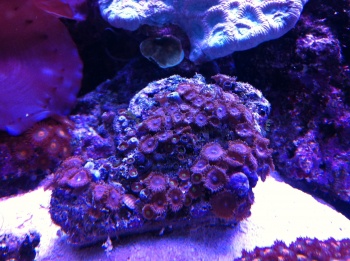
CY2010
-
Posts
210 -
Joined
-
Last visited
-
Days Won
1
Content Type
Profiles
Forums
Gallery
Posts posted by CY2010
-
-
N dissolve easily
-
Is the par a mixture of Blue n uv only or white, blue n uv?
-
LED does give the shimmer effect, promote growth n bring out the fluorescent color of some corals. However, personally i feel that as a full spectrum light, T5 is the better choice to be used as main light source while LED can be used as a supplement.
My 2cents only
-
copy this video from the fish channel youtube. Nice display they have.

So can it be held in SPS tank? I thought its not really reef safe...
-
A sizable ATS may work but I don't think it can keep no3 n po4 at 0.
And 0 reading for no3 n po4 may not be a gd thing also
-
BeamsWork Ultra Bright Clamp on is gd for refugium which I'm using for mine.
-
I reduced fr 27 to 26.5 recently.
-
Also interested to know
-
Bro, u got a pm.
-
One question, does the balling salt rises the salinity as well? Or just a normal ca mg kh addictive?
-
Looking for a mother colony of chilli pepper monti n Hawkin's blue. Pls pm if u hv any to let go. Tks.
-
Looking for a tunze 7096 controller. Pls PM w ur price. Tks.
-
Hi guys, am looking for some unclear green palys n chilli pepper monti. Pls drop me a PM if u hv any to let go. Tks.
-
Sure, bro. Tks:)
-
Hi guys, I'm looking for American captain zoa. Pls drop me a PM if anyone has the zoa frag for sale. Tks.
-
U should try joes juice then.
-
Would like to sell off 2 zoa rocks to clear some space for my new additions. Pls PM me if you are interested. Tks
Pink Zoa Colony - $35 (Mixture of 2 zoas, one pink zoa and one with yellowish green mouth and brown face)
Orange Nipple Colony - $55 (Orange mouth with Green face, more than 100 polyps i think)
Pics attached, WYSIWYG
-
Hi bro, wat is the brownish thing on the rock? Is that clove polyps?
-
Stil available
-
As subject states, this is part of the report which has drawn my attention to the heat concern on LED. It says that as compared to T5, LED's overheating has much concerned. I'm abit confused now as what I heard so far is LED generates much less heat than MH n T5.
Any expert can clarify this...
Here is the report mentioned n the link: http://lumiversal.net/upload/T5%20v.%20LED.pdf
The case study by IEEE also examines the heat dissipation of each lamp and found that the T5 lamp dissipated about 73% of its total lamp power as heat. However, the LED lamp in this study dissipated about 87% - 90% of its input power as heat. This high heat dissipation percentage can greatly increase additional cooling costs in your building, significantly reduce bulb lumen life, and lead to possible bulb failure.
LED fixture heat dissipation and overheating is a growing consumer concern. An Illumra Green Systems executive recently discussed this issue in an article entitled “The Biggest Barrier to LED Lighting.” In this article, the author suggests LEDs have the potential to double their temperature after they have been in use for an extended period of time. The resulting increased LED temperature can reduce the lamp’s life hours by more than 50%. The author describes why LEDs are more prone to overheating than fluorescent bulbs by stating,
“Most light fixtures have been designed to take light from a (fairly focused) point source, the filament in the bulb, and diffuse it evenly over a space. Putting lots of LEDs at one point concentrates the heat, making it harder to keep the LEDs cool.”
To prevent heat concentration in an LED fixture and avoid LED bulb failure, users must provide additional system cooling, resulting in higher HVAC costs and greater energy use.
-
DD has higher Ca n Mg, TM has all the trace elements:)
-
Brand New n Unopened items:
1. Brightwell reef biofuel (250ml) - $14
2. DD Rowa phos (250ml) - $25
Used 1 time only item:
1. Salifert NH4 test kit (expiry date: 12/2013) - $14
2. Salifert Silicate test kit (expiry date: 03/2013) - $10
Up
-
Bro, the flat ones stil available?
-
I'm using a mixture of DD n TM reef pro, so far so gd.



Polylab product
in General Reefkeeping_
Posted
Bro, how long can one set of this product last? Can advise what is the average cost of dosing it per month.